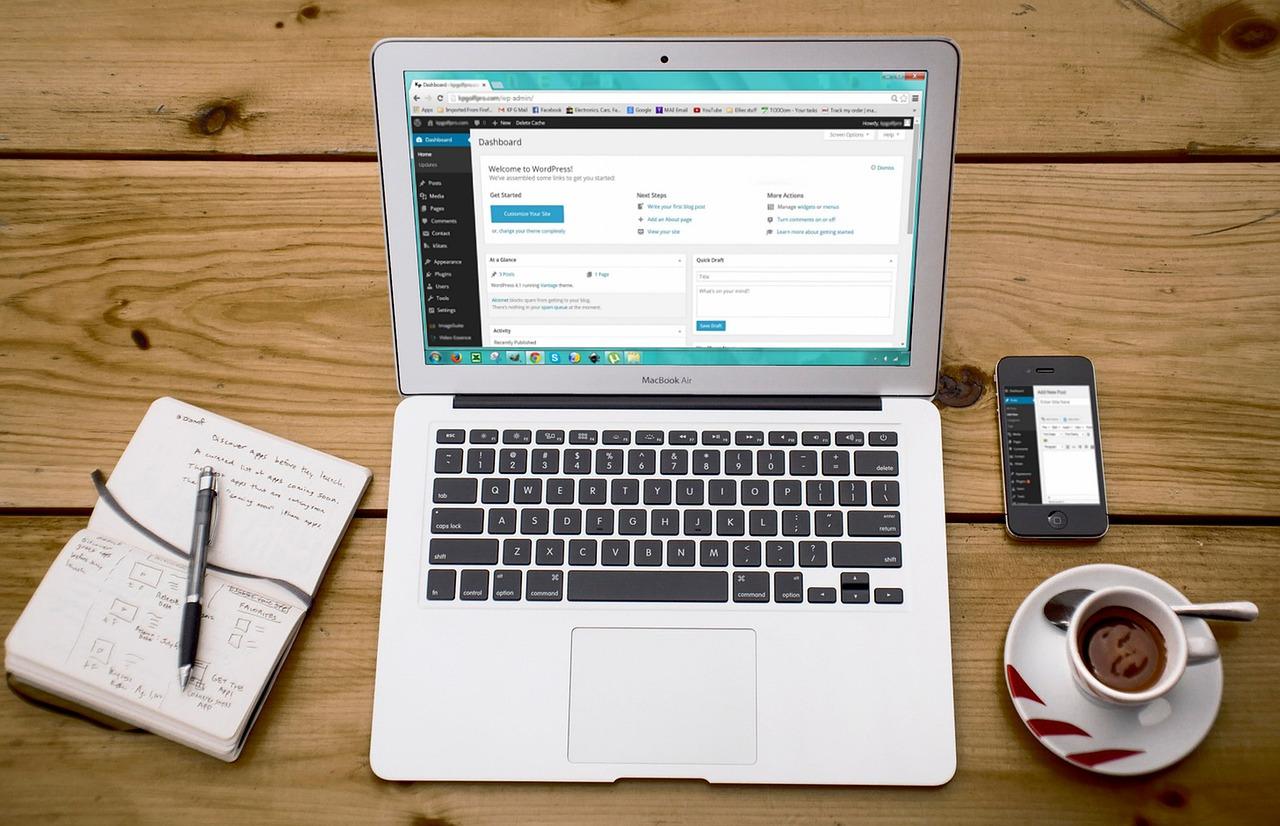Unlock the full potential of your WordPress Multisite with robust security! Discover our top 8+ tips to safeguard your network, from enforcing strong passwords to implementing regular backups. Elevate your site’s security and inspire confidence in your users today!
8+ Best WordPress Multisite Security Tips
In today’s digital landscape, where the stakes are high and cyber threats loom large, securing your WordPress Multisite network is not just an option—it’s an absolute necessity. As we embrace the power of interconnected websites, the need for robust security measures becomes paramount. Whether you’re managing a thriving network of blogs, an online community, or a diverse portfolio of business sites, safeguarding your digital assets can mean the difference between success and vulnerability.
Imagine your websites operating in perfect harmony, free from the anxiety of security breaches, where your creativity can flourish without interruption. In this article, we will unveil the eight best WordPress Multisite security tips that not only protect your network but also empower you to focus on what truly matters: creating, sharing, and growing your online presence. Join us on this journey to fortify your digital realm, ensuring that your Multisite network remains a sanctuary for innovation and collaboration. Let’s transform the way you think about security and take the first step toward a safer, more resilient online future.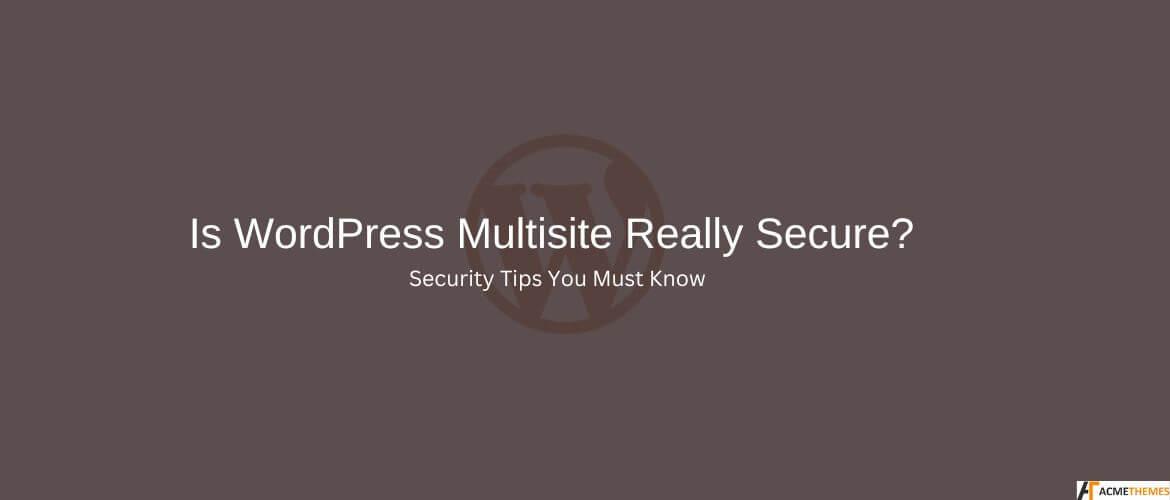
Elevate Your WordPress Multisite Security with Robust Strategies
Strengthening Your Multisite Security
When managing a WordPress Multisite network, security should be a top priority. Implementing strong security measures not only protects your sites but also bolsters your brand’s reputation. Here are essential strategies to safeguard your network:
- Use HTTPS: Ensure that all sites in your network have SSL certificates installed. This encrypts data between the user and the server, significantly reducing the risk of data breaches.
- Limit User Permissions: Carefully assign roles and capabilities. By restricting access to only what users need, you minimize potential vulnerabilities.
- Regular Updates: Keep WordPress core, themes, and plugins up to date. Outdated software is one of the most common entry points for attackers.
- Implement Strong Password Policies: Encourage users to create complex passwords and consider using two-factor authentication (2FA) for an additional layer of security.
Monitoring and Maintenance
Regular monitoring of your network can help you quickly identify and address any security issues. Consider the following:
- Activity Logs: Use plugins that provide detailed logs of user activity. This can help you spot suspicious behavior before it leads to a breach.
- Security Plugins: Leverage reputable security plugins that offer features such as malware scanning, firewall protection, and login attempt monitoring.
- Backup Strategies: Regularly back up your entire network. In the event of a successful attack, having recent backups ensures that you can restore your sites promptly.
Educate Your Team
Security is a shared responsibility. Educate your team about common security threats such as phishing and social engineering:
- Regular Training: Conduct security workshops to keep everyone informed about the latest threats and best practices.
- Establish Reporting Procedures: Encourage staff to report any suspicious activity immediately, fostering a culture of vigilance.
Quick Reference Table
| Strategy | Benefits |
|---|---|
| Use HTTPS | Protects data integrity and user privacy. |
| Limit User Permissions | Reduces the risk of unauthorized access. |
| Regular Updates | Prevents exploitation of known vulnerabilities. |
| Implement Strong Passwords | Enhances defense against brute-force attacks. |
By taking these proactive steps, you can significantly elevate the security of your WordPress Multisite network. Remember, security isn’t just about technology—it’s about creating a culture of awareness and responsibility.
Understanding the Unique Security Challenges of Multisite Networks
Managing a multisite network in WordPress introduces a unique set of security challenges that require careful consideration and proactive measures. Each site within the network not only serves its distinct purpose but may also be vulnerable to various threats that can compromise the entire system. A single breach in one site can potentially grant attackers access to the entire network, making robust security practices essential.
To effectively safeguard your multisite network, it’s crucial to focus on the following areas:
- Access Control: Implement strict user roles and permissions. Ensure that only necessary personnel have administrator access to the network. Regularly review user accounts and remove any that are no longer needed.
- Regular Updates: Timely updates to WordPress core, themes, and plugins are vital. Outdated software can be a gateway for attackers, so establish a routine for updates and stick to it.
- Firewall and Security Plugins: Utilize effective firewall solutions and specialized security plugins that can monitor your network for unusual activity. These tools can help detect and mitigate potential threats before they escalate.
- Backup Solutions: Regular backups are your safety net in the event of a breach. Ensure that your backup strategy includes automated and off-site options, allowing for quick recovery without significant downtime.
| Security Measure | Description |
|---|---|
| Access Control | Define user roles to limit access and ensure accountability. |
| Regular Updates | Keep WordPress and its components up-to-date to eliminate vulnerabilities. |
| Firewalls | Deploy both hardware and software firewalls to protect the network. |
| Backup Solutions | Implement automated backups to prevent data loss. |
Furthermore, be aware of the layered security approach. This strategy involves using multiple security measures to protect your network. By combining various methods, such as strong passwords, two-factor authentication, and daily malware scans, you create a formidable defense against potential threats.
Training users and administrators within your multisite network is equally important. Conduct security awareness sessions to educate them about identifying phishing attempts, creating strong passwords, and recognizing suspicious behavior. A knowledgeable team can act as the first line of defense against security breaches.
Ultimately, understanding and addressing the unique security challenges of a multisite network is not just about implementing tools and strategies; it’s about fostering a culture of security awareness and proactive management. By prioritizing these practices, you can significantly reduce the risk of vulnerabilities and ensure the integrity of your entire network.
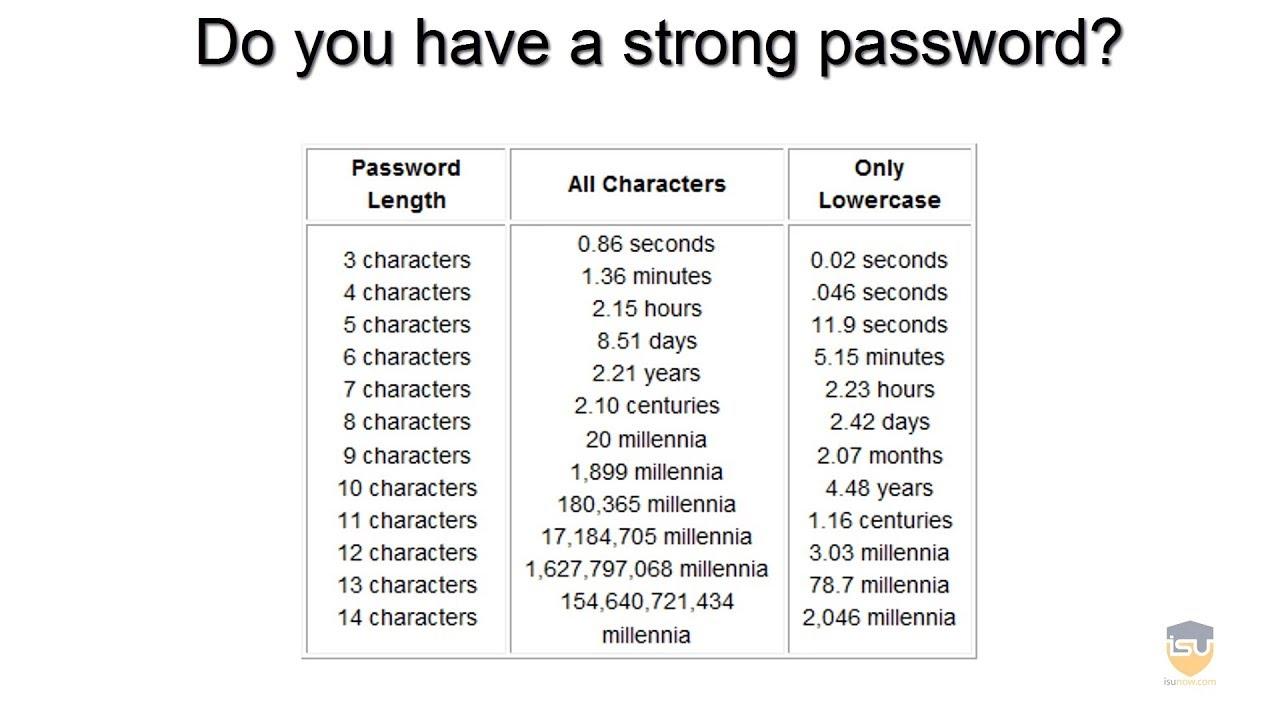
The Power of Strong Passwords: Your First Line of Defense
When it comes to defending your WordPress multisite, strong passwords are your first line of defense. They act as the gatekeepers to your online presence, safeguarding not just your website but also the sensitive data of every user connected to your network. A weak password is akin to leaving your front door wide open, inviting intruders to step in and wreak havoc.
Creating robust passwords requires a mix of complexity and memorability. A strong password should include:
- At least 12 characters
- A combination of uppercase and lowercase letters
- Numbers
- Special symbols (e.g., @, #, $, %)
Consider using a passphrase—an easy-to-remember sentence transformed into a password by taking the first letter of each word and introducing numbers and symbols. For example, “My dog runs fast every day!” could become Mdrf3d!. This method not only strengthens your password but also helps you recall it easily.
Moreover, it’s crucial to avoid common pitfalls when choosing passwords. Here are a few practices to steer clear of:
- Using easily guessable information (e.g., birthdays, names, or common words)
- Reusing passwords across different accounts
- Choosing passwords that are too short
To further enhance security, consider implementing a password manager. These tools can generate and store complex passwords securely. This way, you only need to remember one master password instead of multiple credentials, significantly reducing the risk of weak passwords in your multisite environment.
As an added layer of protection, enforce password policies across your multisite network. For instance, you can require users to change their passwords every few months and ensure that new passwords meet specific complexity criteria. By establishing a culture of strong password practices, you can fortify your defenses and create a safer online space for everyone involved.
Implementing Two-Factor Authentication for Enhanced Protection
In the digital landscape where cyber threats are increasingly sophisticated, implementing two-factor authentication (2FA) is a vital step towards securing your WordPress multisite network. By requiring users to provide two forms of verification for their identity, you significantly enhance the protection of your site against unauthorized access.
Enabling 2FA is straightforward and can be accomplished through various plugins designed specifically for WordPress. Popular choices include:
- Google Authenticator – A simple and effective solution that generates time-based one-time passwords (TOTP).
- Wordfence – Provides extensive security features, including 2FA, and is well-suited for multisite installations.
- Authy – Offers a user-friendly interface and supports multiple devices for added convenience.
When implementing 2FA, consider the following best practices to ensure its effectiveness:
- Educate Your Users – Provide clear instructions on how to set up and use 2FA. Users should understand the importance of this feature and how it protects their accounts.
- Offer Multiple Authentication Methods – While SMS codes are common, consider alternatives like authenticator apps or hardware tokens to diversify your security measures.
- Regularly Review User Access – Periodically audit user roles and permissions within your multisite. Ensure that only necessary personnel have 2FA enabled.
To illustrate the benefits of various 2FA methods, here’s a quick comparison:
| Authentication Method | Security Level | User Experience |
|---|---|---|
| SMS Codes | Moderate | Simple, but vulnerable to interception |
| Authenticator Apps | High | Requires installation, but highly secure |
| Hardware Tokens | Very High | Most secure, but less convenient |
By adopting 2FA, you not only protect your WordPress multisite network from potential breaches but also foster a culture of security among your users. As they become accustomed to this extra layer of protection, they will be more vigilant and proactive in safeguarding their accounts, creating a fortified environment for all.

Regular Updates: The Key to Staying Ahead of Vulnerabilities
Keeping your WordPress Multisite installation secure requires vigilance, and one of the most effective strategies is to implement regular updates. With each update, developers not only enhance features but also patch vulnerabilities that could be exploited by malicious entities.
Consider automating your update process for both core WordPress and plugins. This reduces the risk of human error and ensures that you’re always benefiting from the latest security enhancements. Whether you prefer automatic updates or manual checks, make it a habit to:
- Monitor Plugin Updates: Regularly check for plugin updates and apply them as soon as they become available.
- Update Themes: Ensure that your themes are updated alongside plugins for complete compatibility and security.
- Review Core Updates: Keep an eye on major and minor WordPress core updates to leverage new security features.
Moreover, leverage a staging environment before pushing updates to your live site. This not only allows you to test new updates for compatibility issues but also provides a safety net in case any problems arise. By evaluating updates in a controlled environment, you can ensure that your Multisite remains stable and secure.
Furthermore, consider subscribing to security feeds or newsletters from reputable sources within the WordPress community. These resources often highlight the latest vulnerabilities and updates, equipping you with the knowledge needed to stay proactive. A well-informed approach can significantly reduce the likelihood of falling victim to security breaches.
To quantify the importance of regular updates, it may be helpful to look at data regarding vulnerabilities:
| Year | Vulnerabilities Identified | Security Patches Released |
|---|---|---|
| 2021 | 1,400+ | 1,200+ |
| 2022 | 1,600+ | 1,400+ |
| 2023 | 1,800+ | 1,500+ |
This table illustrates the ever-increasing number of vulnerabilities identified each year, underscoring the critical nature of timely updates. By making updates a cornerstone of your security strategy, you place yourself miles ahead of potential threats. Remember, in the digital landscape, knowledge and action are your best defenses against vulnerabilities.
Choosing the Right Security Plugins for Your Multisite Environment
When managing a WordPress Multisite network, selecting the appropriate security plugins becomes critical to safeguard your sites while enhancing performance. Not all security plugins are designed to operate seamlessly with a multisite setup. Therefore, it’s essential to consider their compatibility and specific features that cater to a network of interconnected sites.
Here are some features to look for when evaluating security plugins:
- Network-Wide Settings: Choose plugins that allow you to implement security settings across the entire network, making it easier to manage.
- Individual Site Controls: Look for plugins that let you customize security measures for each site, acknowledging that different sites may have different needs.
- Malware Scanning: Opt for plugins that offer comprehensive malware scanning to detect threats before they escalate.
- Firewall Protection: A robust firewall feature is essential to block malicious traffic across the network.
- Brute Force Protection: Ensure the plugin has mechanisms in place to prevent unauthorized access attempts on individual sites.
- Automatic Updates: Prioritize plugins that offer automatic updates to ensure you’re always protected with the latest security patches.
In addition, consider the user experience of the security plugin:
- Ease of Use: The plugin interface should be intuitive, allowing you to manage security settings without technical expertise.
- Support and Documentation: Choose plugins that provide excellent support and thorough documentation, which can be invaluable for troubleshooting.
Here’s a quick comparison of some popular security plugins suitable for a multisite environment:
| Plugin Name | Network Compatibility | Key Features |
|---|---|---|
| Wordfence | Yes | Firewall, Malware Scanner, Login Security |
| Sucuri Security | Yes | Activity Auditing, File Integrity Monitoring |
| iThemes Security | Yes | Brute Force Protection, Two-Factor Authentication |
| All In One WP Security & Firewall | Yes | Firewall, User Account Security |
Ultimately, the right security plugin will not only bolster your WordPress Multisite’s defenses but also enhance your overall site management experience. By investing in a reliable and feature-rich security solution, you can focus more on growing your network and less on worrying about potential threats.

Creating a Comprehensive Backup Plan for Peace of Mind
In the fast-paced digital world, where your online presence is your business lifeline, a comprehensive backup plan is not just a luxury; it’s a necessity. The peace of mind that comes from knowing your data is secure allows you to focus on growth and creativity rather than worrying about potential setbacks.
To create an effective backup strategy for your WordPress multisite, consider the following essential components:
- Regular Backups: Set up automated backups to occur daily or weekly, ensuring you have the most recent data saved without needing to remember to do it manually.
- Backup Locations: Store your backups in multiple locations, such as cloud storage (e.g., Google Drive, Dropbox) and an external hard drive. This redundancy is crucial for safeguarding against hardware failures.
- Database Backup: Since your WordPress multisite relies heavily on its database, ensure that your backup plan includes regular database exports, which can be done easily with plugins or through your hosting provider.
- File Backups: Don’t forget to back up your themes, plugins, and uploads. These files are essential for restoring your site to its original state.
- Testing Your Backups: Regularly test your backups by restoring them to a staging site. This practice not only ensures that your backups are functioning correctly but also familiarizes you with the restoration process.
Here’s a simple backup schedule table to help you organize your tasks:
| Backup Type | Frequency | Storage Location |
|---|---|---|
| Full Site Backup | Weekly | Cloud & External Drive |
| Database Backup | Daily | Cloud |
| File Backup (Themes/Plugins) | Monthly | Cloud & External Drive |
| Test Restore | Quarterly | Staging Site |
In addition to these components, consider implementing version control for your code and content. This approach not only allows you to revert to previous versions of your site but also provides a safety net for any changes made during development.
Embracing a robust backup strategy empowers you to tackle challenges head-on and innovate without fear. With your data securely backed up, you can invest your energies into scaling your business, engaging your audience, and exploring new possibilities, all while resting assured that your digital foundation is solid.
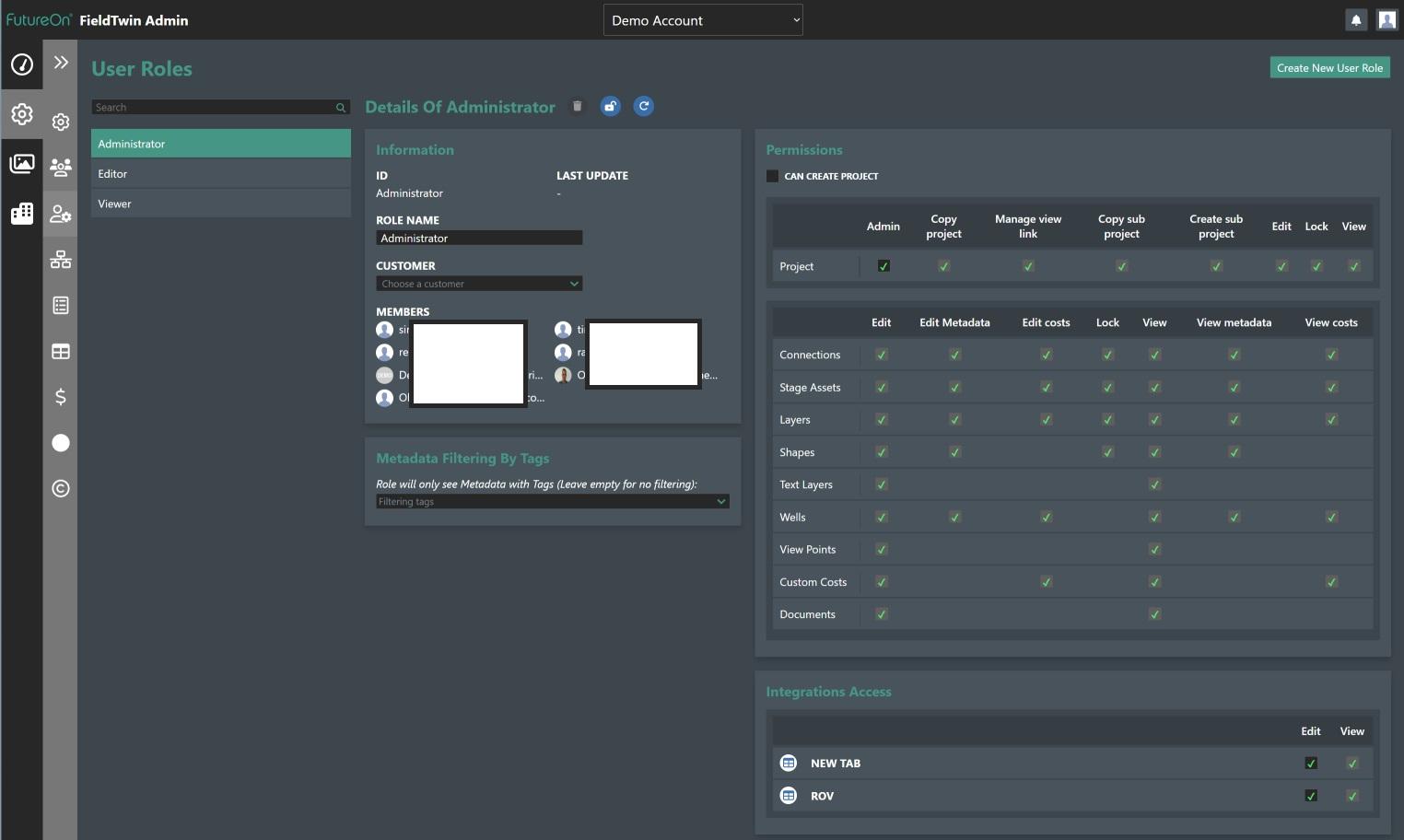
Establishing User Roles and Permissions for Tightened Security
In a WordPress Multisite setup, the importance of defining user roles and permissions cannot be overstated. Properly configured roles ensure that each user has access only to the areas of the network relevant to their responsibilities, reducing the risk of unauthorized changes or security breaches.
Understanding WordPress User Roles
WordPress comes with a built-in user role management system that includes various roles such as:
- Super Admin – Has access to all sites and can manage the entire network.
- Administrator – Can manage their specific site, including adding new users and modifying site settings.
- Editor – Can publish and manage posts, including those of other users.
- Author – Can publish and manage their own posts.
- Contributor – Can write and manage their own posts but cannot publish them.
- Subscriber – Can manage their profile and read content.
Customizing Roles for Enhanced Security
For heightened security, consider creating custom roles tailored to your specific network needs. This can be achieved using plugins like User Role Editor or Members. Custom roles allow you to:
- Limit access to sensitive areas, such as plugins and themes.
- Provide granular permissions based on user requirements.
- Control what actions users can perform across the network.
Establishing Clear Permission Guidelines
A table outlining recommended permissions for each role can serve as a quick reference for managing user access effectively:
| Role | Manage Sites | Manage Users | Edit Posts | Publish Posts |
|---|---|---|---|---|
| Super Admin | ✔️ | ✔️ | ✔️ | ✔️ |
| Administrator | ❌ | ✔️ | ✔️ | ✔️ |
| Editor | ❌ | ❌ | ✔️ | ✔️ |
| Author | ❌ | ❌ | ✔️ | ❌ |
| Contributor | ❌ | ❌ | ✔️ | ❌ |
| Subscriber | ❌ | ❌ | ❌ | ❌ |
By understanding user roles and customizing permissions, you create a robust framework that not only protects your network but also empowers users to perform their tasks efficiently. Regularly review and adjust these roles as needed to adapt to evolving security threats and organizational changes.
Ultimately, a well-defined user role structure fosters a culture of responsibility among users, ensuring that everyone understands their role in maintaining the integrity and security of the multisite network.
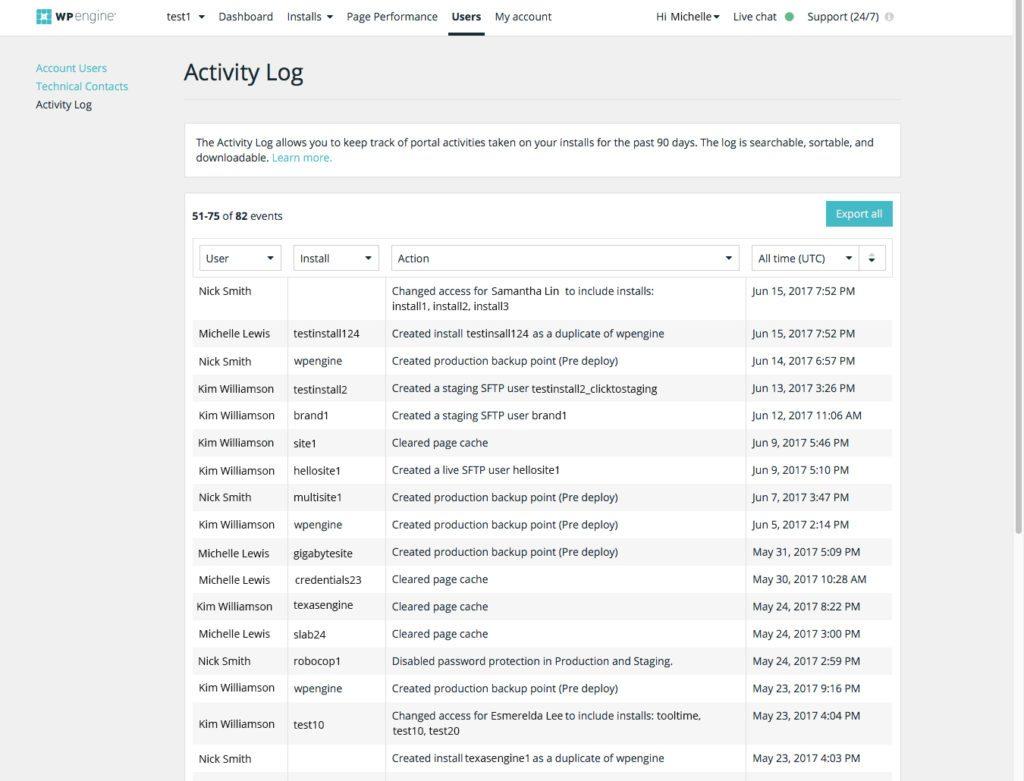
Monitoring User Activity to Detect Suspicious Behavior
In a landscape where cyber threats are ever-evolving, the capacity to monitor user activity is paramount for maintaining a secure WordPress multisite environment. Implementing a robust monitoring system can serve as a proactive measure against suspicious behavior that may compromise your sites. By keeping an eye on user actions, you can swiftly identify potential risks and take necessary precautions to safeguard your valuable data.
To effectively monitor user activity, consider the following strategies:
- Log User Actions: Use plugins that record all user interactions on your site. This not only helps in tracking changes but also offers insights into normal user behavior.
- Set User Role Limitations: Assign specific roles to users, ensuring they only have access to the parts of the site relevant to their responsibilities. This minimizes the risk of unauthorized actions.
- Regularly Review User Accounts: Periodically audit user accounts to identify any anomalies, such as inactive users or those with elevated permissions that are no longer necessary.
Moreover, integrating real-time alert systems can enhance your monitoring efforts. Such systems can notify administrators of unusual activities, such as:
| Activity Type | Alert Criteria |
|---|---|
| Multiple Failed Login Attempts | More than 5 attempts from a single IP within 10 minutes |
| New User Registrations | 10+ registrations in a short period |
| Plugin or Theme Changes | Unrecognized changes made within a week |
Leveraging advanced analytics tools can further enhance your monitoring capabilities. These tools can help you analyze patterns and identify any deviations from regular user behavior. Look for software that offers features like:
- Behavioral Analytics: Understand how users interact with your site over time.
- Heatmaps: Visualize user activity to locate areas that may require additional security measures.
- User Session Recordings: Watch replays of user sessions to detect any odd behaviors or interactions.
Ultimately, an effective user activity monitoring system lays the groundwork for a secure WordPress multisite. By actively observing user interactions and swiftly responding to potential threats, you nurture a safer digital environment for your users and your content. Regular updates and reviews of your monitoring processes will ensure that you stay one step ahead of any malicious ambitions in the ever-changing world of online security.
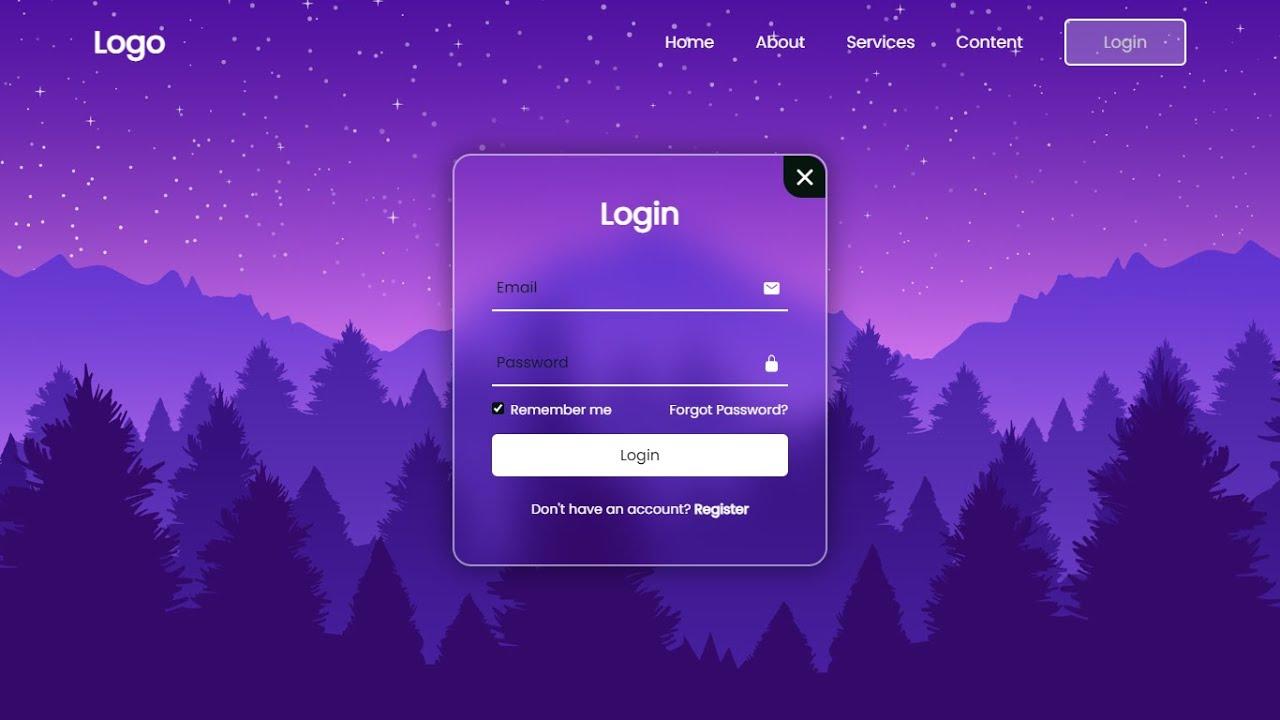
Secure Your Login Page: Best Practices for Protection
Securing your login page is crucial for maintaining the integrity of your WordPress Multisite network. With the increasing sophistication of cyber threats, it’s essential to implement robust security measures that not only protect your site but also instill confidence in your users. Here are some best practices that can significantly enhance the security of your login page:
- Use Strong Passwords: Ensure that all users, including administrators, employ complex passwords. This should include a mix of uppercase letters, lowercase letters, numbers, and special characters.
- Limit Login Attempts: Use plugins that restrict the number of failed login attempts. This can help prevent brute-force attacks by locking out users temporarily after several unsuccessful tries.
- Implement Two-Factor Authentication: Adding an extra layer of security through 2FA can greatly reduce the risk of unauthorized access. No password is infallible, but a second authentication step can make it much harder for intruders.
- Change the Default Login URL: Instead of using the standard /wp-admin or /wp-login.php, consider changing your login URL to something unique. This can help deter opportunistic attackers who typically target WordPress sites.
- Utilize SSL Certificates: Secure Socket Layer (SSL) certificates encrypt the data transmitted between the user and the server. Ensure your login page uses HTTPS to protect sensitive information.
Monitoring and maintenance are also vital components of a secure login page. Regularly update your WordPress installation, themes, and plugins to patch any known vulnerabilities. Additionally, consider utilizing security plugins that offer features like login activity monitoring and real-time alerts for suspicious behavior.
Lastly, educate your users about best practices for secure logins. Encourage them to avoid using the same password across multiple sites and to recognize phishing attempts. A well-informed user base can significantly contribute to the overall security of your WordPress Multisite network.

Utilizing SSL Certificates for Secure Data Transmission
Implementing SSL certificates is a fundamental step in securing your WordPress multisite network. These certificates establish a secure, encrypted connection between your users’ browsers and your server, ensuring that sensitive data such as passwords, personal information, and payment details are transmitted safely.
When your website transitions from HTTP to HTTPS, not only do you enhance security, but you also gain the trust of your visitors. Users are more likely to engage with your site when they see the padlock icon in their browser’s address bar, signaling that their data is safe. This trust can significantly impact your engagement rates and overall traffic.
Additionally, SSL certificates can improve your search engine rankings. Search engines like Google prioritize secure sites, making it crucial for your WordPress multisite to adopt SSL if you wish to remain competitive in the digital landscape. An SSL certificate not only helps with SEO but also plays a role in reducing bounce rates, as users feel more secure browsing your content.
To implement SSL effectively, consider the following steps:
- Choose the Right SSL Certificate: Depending on your multisite setup, you may need a single-domain, multi-domain, or wildcard SSL certificate.
- Install the SSL Certificate: Most hosting providers offer SSL installation services, making it easier to secure your network.
- Update Your Site URLs: Change your site URLs from HTTP to HTTPS to ensure all resources load securely.
- Redirect HTTP Traffic: Set up 301 redirects to automatically send users from the HTTP version of your site to the HTTPS version.
- Regularly Monitor SSL Presence: Use tools to check that your SSL is functioning correctly and that all pages are secure.
Using an SSL certificate is not just about compliance; it is about creating a safe environment for your users. As cyber threats continue to evolve, investing in SSL technology will protect both your site and its visitors. This proactive measure not only fortifies your site’s defenses but also positions your WordPress multisite as a leader in security and reliability.
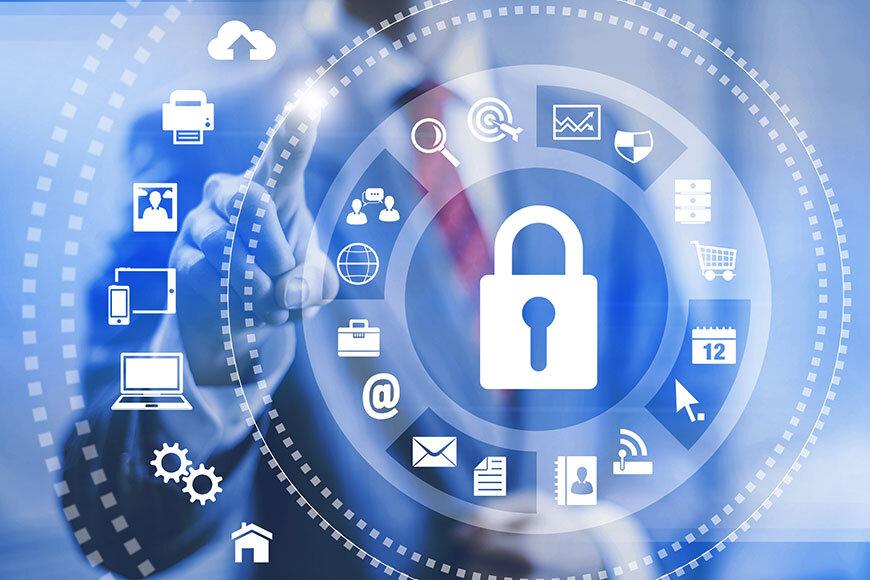
Regular Security Audits: Assessing Your Multisites Resilience
Conducting regular security audits for your WordPress multisite is not just a best practice; it’s an essential strategy for safeguarding your digital assets. In a world where cyber threats are ever-evolving, having a proactive approach to security can significantly enhance your network’s resilience. Security audits allow you to pinpoint vulnerabilities, ensuring your multisite can withstand potential attacks.
When performing security audits, consider employing a comprehensive checklist that addresses various aspects of your multisite setup:
- Access Controls: Review user roles and permissions to ensure only authorized users have access.
- Plugin and Theme Security: Regularly check for outdated plugins or themes that may introduce vulnerabilities.
- Data Encryption: Ensure that all data transmitted between users and your sites is encrypted using SSL certificates.
- Backup Protocols: Verify that your backup processes are reliable and conducted frequently
Utilizing automated security tools can streamline the audit process. These tools can help identify weaknesses without requiring exhaustive manual checks. Automating tasks such as:
- Malware Scans: Regular scans can flag suspicious activities before they escalate.
- Log Analysis: Monitoring logs helps in detecting anomalies that could signal unauthorized access.
- Vulnerability Assessments: Regularly scan for known vulnerabilities in your WordPress setup.
Consider maintaining a security audit log to track findings, measures taken, and improvements made over time. This log not only provides a historical perspective but also aids in developing a culture of security awareness among your team. A simple table can serve to track these audits:
| Date | Auditor | Findings | Actions Taken | Status |
|---|---|---|---|---|
| 2023-01-15 | John Doe | Outdated plugins | Updated plugins | Resolved |
| 2023-02-10 | Jane Smith | Weak passwords | Implemented stronger policies | Resolved |
| 2023-03-05 | Alex Johnson | Missing SSL | Installed SSL certificates | Resolved |
Ultimately, a culture of vigilance and continuous improvement is vital for your multisite’s security. Regular audits not only help in identifying potential threats but also empower your team with the knowledge and tools needed to fortify your defenses. Remember, the cost of prevention is always less than the price of recovery.
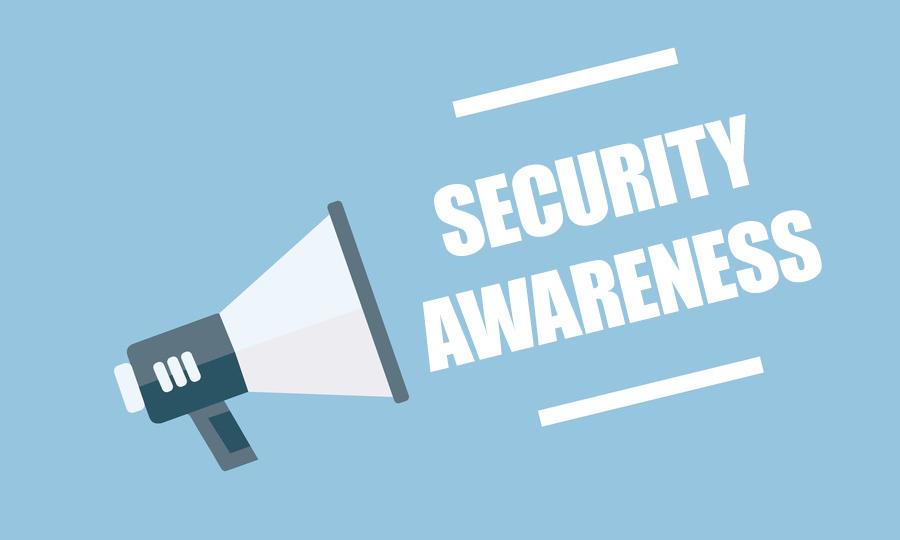
Educating Your Team on Security Awareness and Best Practices
In an increasingly digital world, educating your team about security awareness is not just a necessary measure; it’s a crucial investment in the future of your business. Every member of your organization, from administrators to end-users, plays a vital role in maintaining the integrity of your WordPress Multisite network. By fostering a culture of security, you empower your team to recognize and respond to potential threats effectively.
Start by implementing regular training sessions focused on security best practices. These sessions can cover a variety of topics, including:
- Phishing Awareness: Provide examples of common phishing attempts and train your team to identify suspicious emails.
- Password Hygiene: Encourage the use of strong, unique passwords and educate them on the importance of changing passwords regularly.
- Software Updates: Stress the necessity of keeping plugins, themes, and WordPress core updated to protect against vulnerabilities.
Another effective educational tactic is to use real-world scenarios to illustrate the impact of security breaches. Sharing case studies of businesses that suffered from lax security can help your team understand the potential consequences of their actions. By using relatable examples, you can inspire a proactive approach to security.
Incorporating a security checklist as part of your team’s daily routine can also enhance awareness. Consider creating a simple, easy-to-follow table that outlines essential tasks:
| Task | Frequency | Responsible Party |
|---|---|---|
| Update Plugins | Weekly | Admin Team |
| Change Passwords | Monthly | All Users |
| Backup Site | Daily | IT Department |
encourage open communication within your team. Establish channels where employees can report security concerns or suspicious activities without fear of repercussion. This fosters a supportive environment where everyone feels responsible and accountable for the security of your WordPress Multisite.
By prioritizing security education and awareness, you create a resilient team ready to navigate the complexities of online threats. Invest time in training, and you’ll not only safeguard your network but also build a culture of vigilance that protects your organization for years to come.
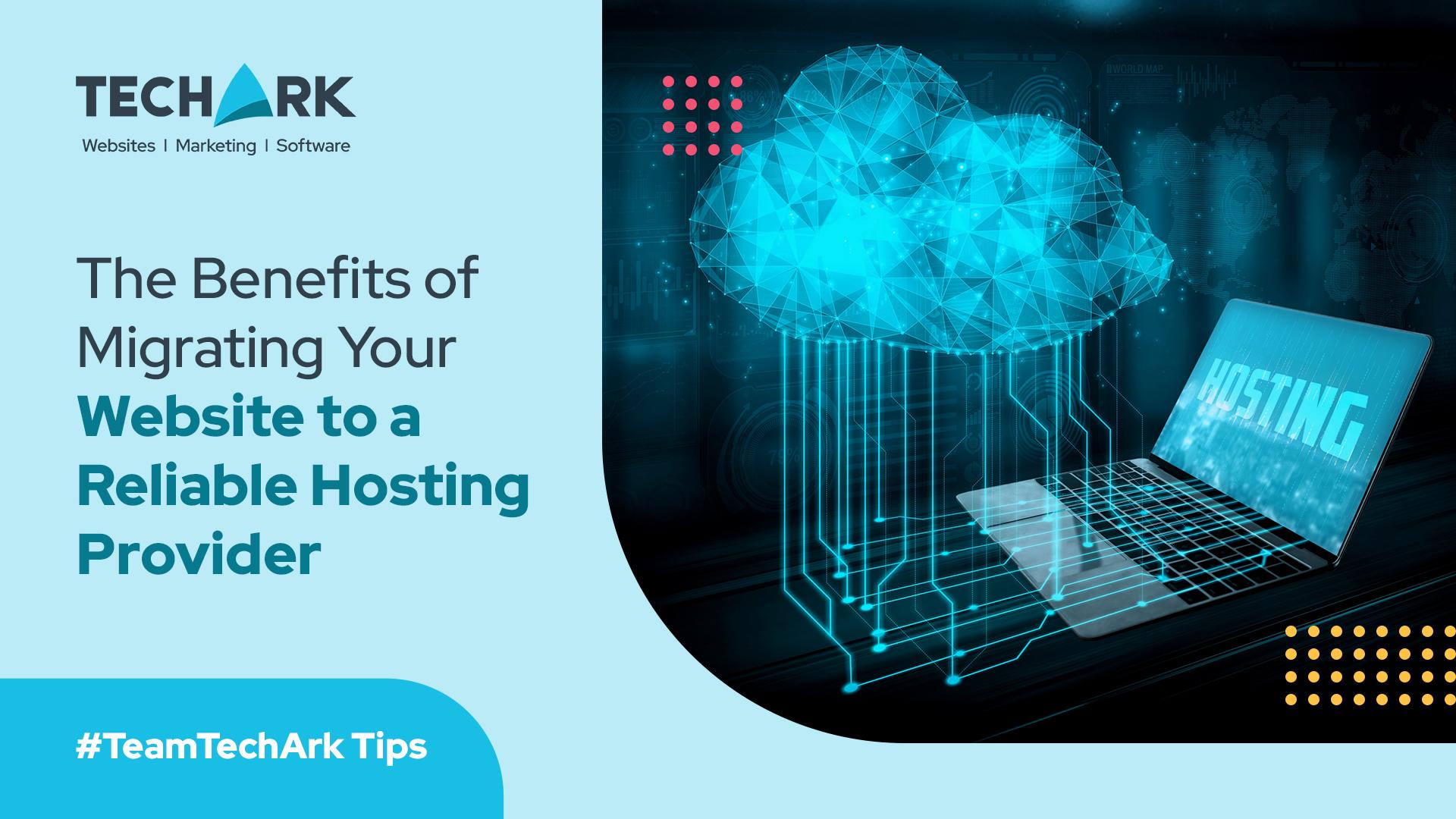
The Importance of a Reliable Hosting Provider in Security Strategy
When it comes to establishing a secure WordPress multisite network, choosing the right hosting provider is crucial. A reliable hosting service not only ensures that your websites are always online and accessible, but it also plays a pivotal role in your overall security strategy. The foundation of your security measures rests upon the infrastructure and capabilities of your hosting provider.
Performance and Security Features: A dependable host offers robust security features that can protect your sites from various threats. Look for providers that include:
- Firewalls: These act as a barrier between trusted internal networks and untrusted external networks.
- Automatic Backups: Regular backups can save your data in case of an attack or accidental deletion.
- SSL Certificates: Essential for encrypting data transferred between users and your site, ensuring secure transactions.
Moreover, your hosting provider should be equipped to manage DDoS attacks and provide malware scanning and removal services. The ability to monitor threats in real-time can significantly reduce the risk of breaches.
Scalability and Support: As your network grows, so do your security needs. A reliable hosting provider should offer scalability options, allowing you to upgrade your resources seamlessly without compromising security. Additionally, 24/7 customer support is vital. In the event of a security incident, prompt assistance can mitigate potential damage and restore services quickly.
Reputation and Reliability: When evaluating hosting providers, consider their track record regarding uptime and security incidents. Research customer reviews and industry ratings to understand their reputation. A host that has experienced numerous security breaches may not be the right choice for your multisite network.
| Criteria | Importance |
|---|---|
| Firewalls | Prevent unauthorized access |
| Automatic Backups | Data recovery capability |
| SSL Certificates | Secure data transmission |
| Scalability | Accommodate growth |
| 24/7 Support | Immediate incident response |
the importance of a reliable hosting provider in your security strategy cannot be overstated. By ensuring that your infrastructure is fortified with advanced security measures, you empower your multisite network to thrive in an ever-evolving digital landscape, allowing you to focus on growth and innovation without the constant worry of security vulnerabilities.
Frequently Asked Questions (FAQ)
Q&A: 8+ Best WordPress Multisite Security Tips
Q1: Why is security particularly important for WordPress Multisite installations?
A: Security is paramount for WordPress Multisite installations because a single vulnerability can compromise all sites within the network. With multiple users and sites operating under one roof, a breach not only jeopardizes sensitive data but can also tarnish your network’s reputation. By prioritizing security, you not only protect individual sites but also foster trust and reliability across your entire network.
Q2: What are some essential tips for securing a WordPress Multisite?
A: Here are a few indispensable tips:
- Regular Updates: Keep WordPress core, themes, and plugins updated to patch known vulnerabilities.
- Strong Passwords: Enforce strong password policies for all users to minimize unauthorized access.
- User Role Management: Limit user roles and permissions to the minimum necessary for their tasks.
- SSL Certificates: Implement SSL to encrypt data transfer, safeguarding user information and enhancing SEO.
Q3: How can I monitor my WordPress Multisite for security threats?
A: Regular monitoring is key. Utilize security plugins that offer real-time monitoring, vulnerability detection, and alerts for suspicious activity. Additionally, consider setting up a logging system to track user activity on the network. With proactive monitoring, you can detect and respond to threats before they escalate.
Q4: Is it necessary to hire a professional for security?
A: While DIY approaches can be effective, enlisting a security professional can offer peace of mind. They bring expertise in identifying vulnerabilities, implementing advanced security measures, and conducting regular audits. Investing in professional help is a proactive step towards a robust security posture.
Q5: Can I enhance security through my hosting provider?
A: Absolutely! Choose a hosting provider that specializes in WordPress and offers security features such as firewalls, DDoS protection, and automatic backups. A reputable host will often have built-in security measures, significantly reducing the risk of breaches.
Q6: How often should I back up my WordPress Multisite?
A: Backups should be scheduled regularly—ideally daily or weekly, depending on how frequently your sites are updated. Ensure that backups are stored securely and can be easily restored in case of a security incident or data loss.
Q7: What role does user education play in security?
A: User education is a cornerstone of security. Train your network users on best practices, such as recognizing phishing attempts, creating strong passwords, and maintaining safe browsing habits. Empowering users with knowledge can significantly reduce the risk of human error leading to security breaches.
Q8: How can implementing security tips inspire confidence in my WordPress Multisite?
A: By taking decisive action towards securing your WordPress Multisite, you demonstrate a commitment to excellence and reliability. This inspires confidence not only among users but also stakeholders and customers. When they know their data is safe and secure, they are more likely to engage with your network, helping it flourish.
Q9: What’s the first step I should take towards enhancing my WordPress Multisite security?
A: Start with a comprehensive security audit. Assess your current security measures, identify vulnerabilities, and prioritize areas for improvement. This foundational step will guide you in implementing effective strategies and set the stage for a more secure WordPress Multisite environment.
Embrace these security tips and foster a resilient network that inspires trust and innovation. A secure WordPress Multisite not only protects your assets but also propels you toward success in the digital landscape.
Insights and Conclusions
As we wrap up our exploration of the best WordPress multisite security tips, it’s clear that safeguarding your network is not just a technical necessity; it’s a commitment to nurturing a safe and thriving online community. By implementing these strategies, you’re not only protecting your sites, but also empowering your users and enhancing their experience.
Remember, security is not a one-time effort but a continuous journey. Embrace these practices, stay informed about the latest threats, and adapt your defenses accordingly. Your vigilance will not only fortify your multisite network but also inspire trust and loyalty among your users.
So, take action today! Start implementing these security tips, and watch your WordPress multisite flourish in a secure environment. Together, let’s build a safer digital landscape where creativity and collaboration can thrive without fear. Your proactive steps today will lay the foundation for a brighter and more secure tomorrow.



